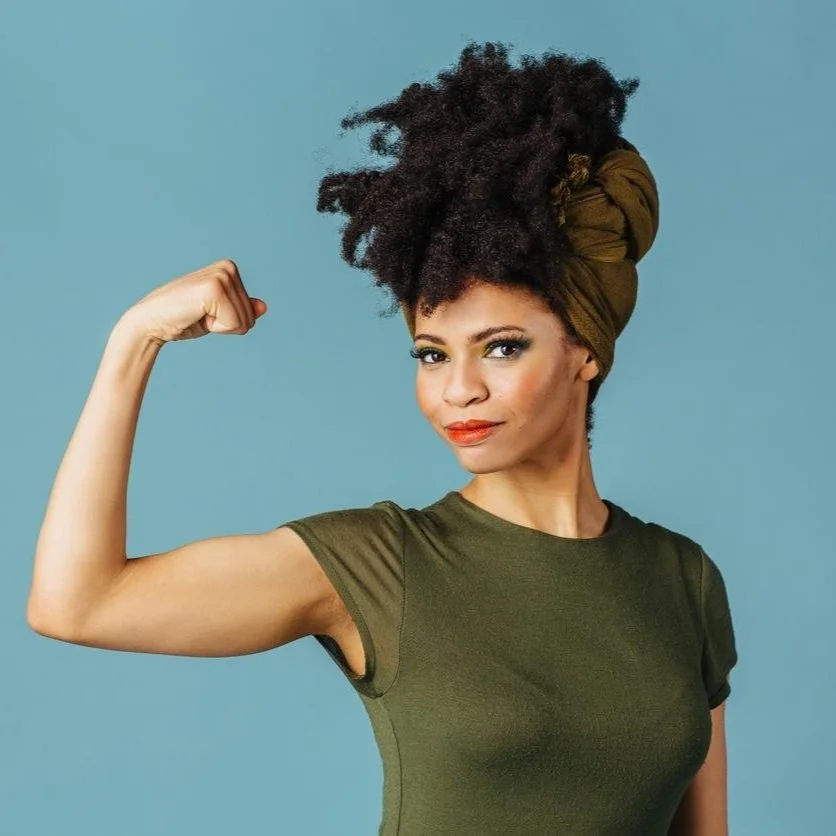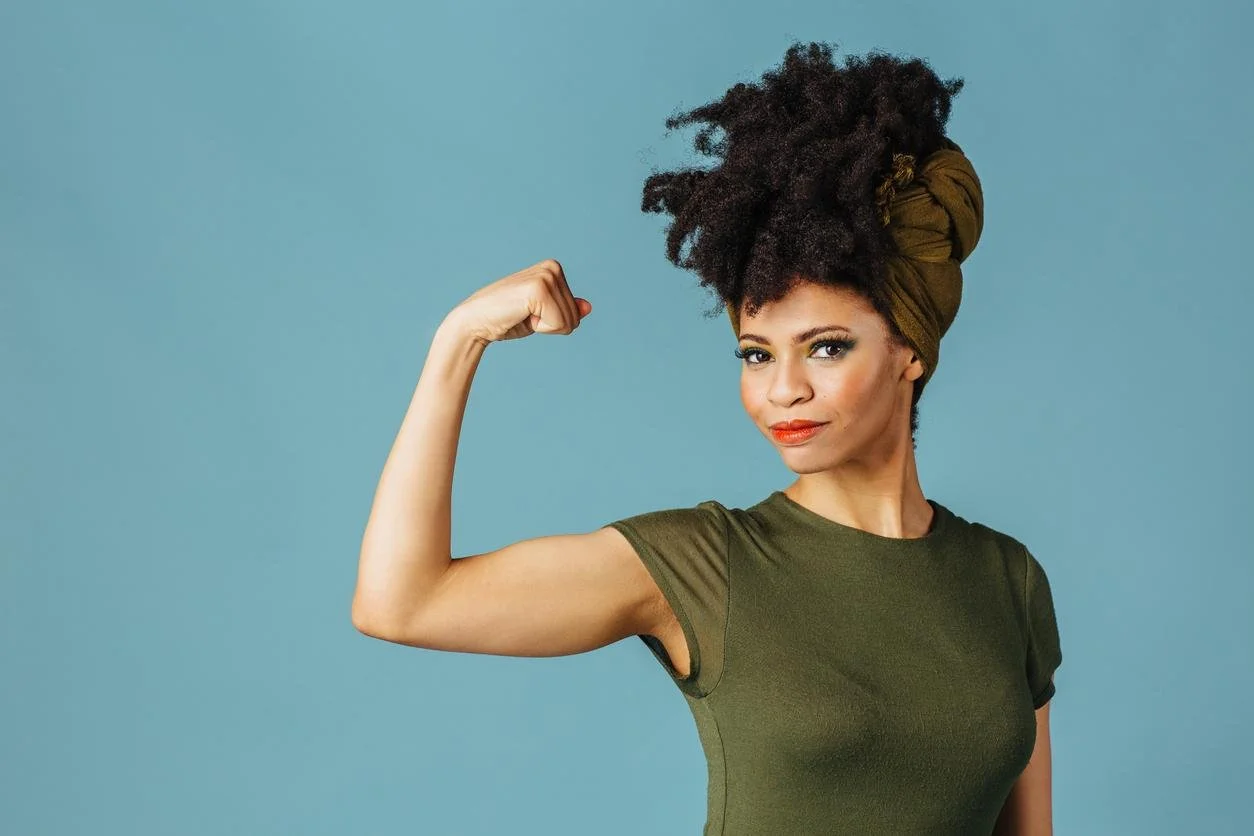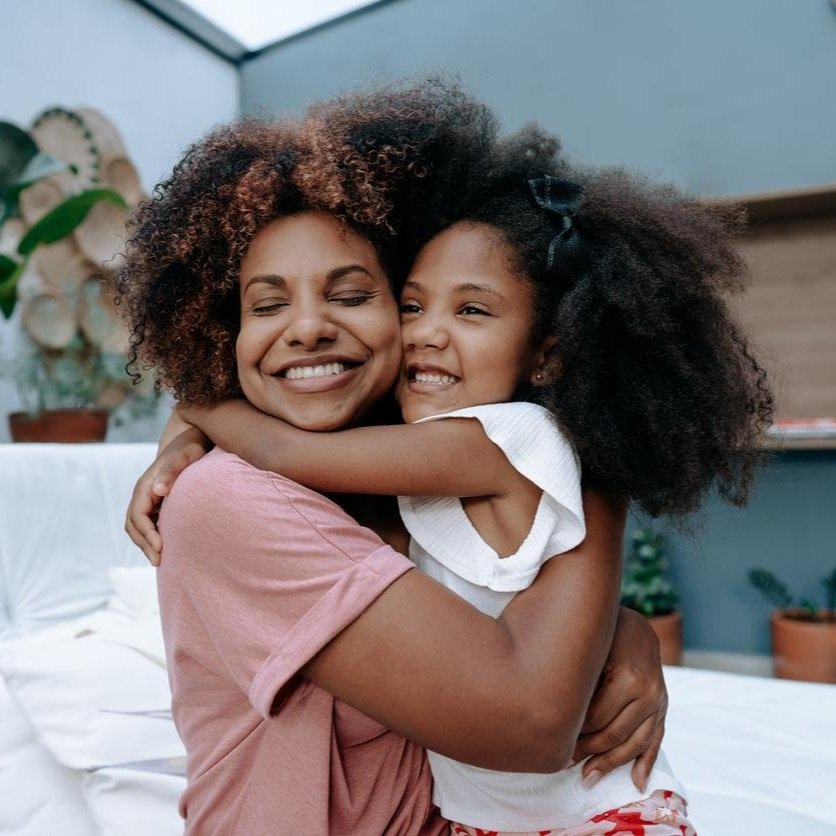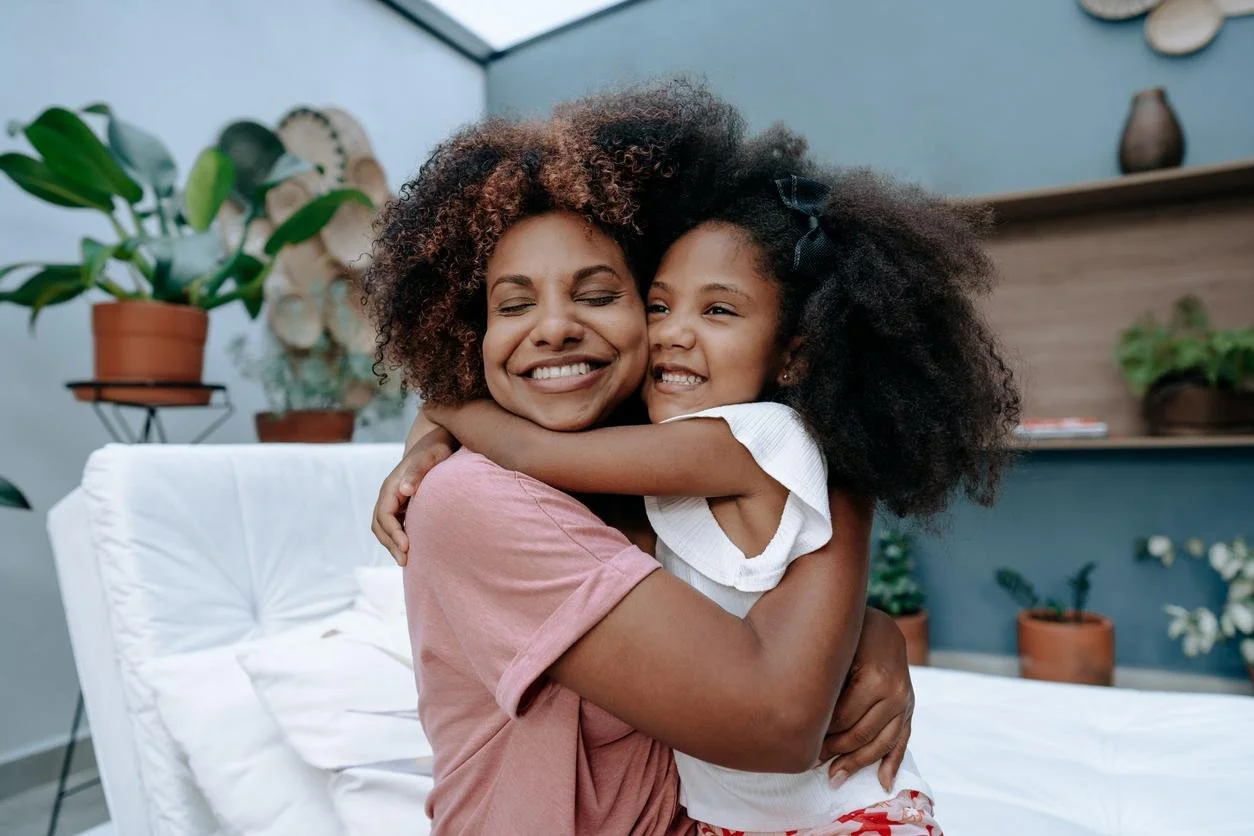Sisterhood in Self-Care: Building a Supportive Community for Black Women
Building a supportive self-care community among Black women fosters empowerment, healing, and mutual support through shared experiences and intentional connection. We discuss it here!
Photo Credit: Lorado via iStockPhoto.com
By: Jamila Gomez
Building a supportive self-care community among Black women can be a transformative journey of mutual support, empowerment, and shared healing. In a world where daily stressors and systemic challenges often weigh heavily, connecting with other Black women who understand these experiences can provide a powerful sense of belonging and validation. Here are a few guiding principles to consider when fostering such a community.
1. Start with Intention
Begin by defining what you hope to create. Are you looking for a group focused on mental wellness, physical well-being, spiritual growth, or a combination of these elements? Establishing a clear vision helps set the tone, shape group activities, and attract those who will benefit the most from this space.
2. Choose the Right Platforms
It can be helpful to utilize both online and offline spaces to build your community. Social media platforms, private group chats, and video conference tools enable members to stay connected across different locations and time zones. Meanwhile, in-person gatherings—like monthly coffee meetups or wellness circles—foster deeper, face-to-face connections. Striking a balance between virtual and physical interactions ensures that the community remains accessible and engaging.
3. Create a Safe Space
A supportive self-care community thrives on trust and authenticity. Lay down ground rules that emphasize respect, confidentiality, and kindness. Encourage members to speak openly about their challenges, anxieties, and triumphs. Recognizing that many Black women face microaggressions, discrimination, and unique mental health stressors, a culture of understanding and empathy is essential.
4. Encourage Collective Learning
Sharing knowledge and resources is a key aspect of community building. Plan skill-sharing sessions on topics ranging from mindfulness practices to financial wellness. Invite experts—such as therapists, dietitians, or fitness instructors—who understand the specific experiences of Black women. This ensures that discussions are tailored and culturally relevant, enriching the group’s collective wisdom.
5. Celebrate Individual and Collective Wins
Acknowledging achievements, whether big or small, fosters motivation and solidarity. This can be as simple as hosting a virtual “praise break” session where members highlight personal wins from the week, or organizing an in-person gathering to celebrate milestones like job promotions or new business ventures. Recognizing success helps reinforce the sense of unity and support within the group.
6. Practice Sustained Self-Care
Encourage members to develop personalized self-care routines that address their unique emotional, physical, and spiritual needs. Provide regular check-ins to keep each other accountable. Recommendations for journaling, guided meditation, yoga classes, or nature walks can enhance overall well-being. By keeping self-care at the center of everything you do, members can better support themselves and each other.
7. Prioritize Growth and Adaptation
As life circumstances change, your community’s needs will evolve too. Routinely assess what is working and what could be improved. Staying flexible ensures the group remains relevant, uplifting, and supportive as members grow and flourish together.
Through intentional organization, authenticity, and shared commitment, Black women can cultivate powerful self-care networks that nurture strength, healing, and collective uplift.
YOU MAY ALSO BE INTERESTED IN:
SHARE TO SOCIAL MEDIA
The Joys and Challenges of Solo Travel for Black Women
Solo travel for Black women is an empowering journey of self-discovery and cultural exploration, offering independence and personal growth while navigating unique challenges related to race, gender, and safety. We discuss it here!
Photo Credit: DuxX via iStockPhoto.com
By: Jamila Gomez
Solo travel is a transformative experience that allows for self-discovery, independence, and exploration of the world on your own terms. For Black women, traveling alone can be an empowering act of self-care and resistance against societal expectations. However, it also comes with unique challenges shaped by race, gender, and culture.
The Joys of Solo Travel for Black Women
1. Empowerment and Independence
Traveling alone as a Black woman is a powerful affirmation of independence. It gives you the freedom to set your itinerary, make spontaneous decisions, and explore the world without compromise. Solo travel often leads to increased self-confidence as you navigate unfamiliar situations and adapt to new cultures.
2. Self-Discovery
Solo travel allows you to step away from the roles and responsibilities you fulfill at home. Whether it’s pursuing hobbies, rediscovering passions, or simply enjoying solitude, traveling alone can provide the space for personal growth and self-reflection.
3. Representation Matters
As a solo Black woman traveler, you contribute to breaking stereotypes and expanding perceptions about who travels and why. Your presence in spaces where Black women are underrepresented can inspire others to pursue their own adventures.
4. Cultural Connections
Traveling solo opens doors to authentic cultural exchanges. Locals and fellow travelers are often more curious and open to engaging when you’re alone, creating opportunities for meaningful connections and friendships.
5. Freedom from Microaggressions
Many Black women find freedom in solo travel because it allows them to choose destinations and environments where they feel celebrated rather than tolerated. Exploring spaces that value and honor your identity can be deeply rejuvenating.
The Challenges of Solo Travel for Black Women
1. Navigating Racism and Colorism
Racism and colorism are global issues that can manifest in subtle or overt ways while traveling. From staring to discriminatory treatment, navigating these experiences requires resilience and preparation.
2. Safety Concerns
Safety is a priority for any solo traveler, but for Black women, there’s an added layer of vigilance due to intersecting factors of race and gender. Harassment, unwanted attention, and cultural misunderstandings can pose challenges in certain destinations.
3. Underrepresentation in Media
The lack of representation of Black women in mainstream travel media can make it difficult to find relatable resources or examples of similar travelers. This can create feelings of isolation, especially when navigating predominantly white spaces.
4. Hair Care and Beauty Products
Managing hair care and finding beauty products that cater to Black women can be a logistical challenge in many parts of the world. Access to specific products or professional services may require advance planning or creativity.
5. Language and Cultural Barriers
Language and cultural differences can sometimes lead to misunderstandings or amplify feelings of being an outsider, especially in places where Black travelers are rare.
Tips for Thriving as a Solo Black Woman Traveler
1. Research Your Destination
Look for Black travel bloggers, influencers, or online forums like Black Women Travel Network or Nomadness Travel Tribe. These communities offer invaluable insights into destinations that are welcoming and inclusive.
2. Prioritize Safety
Share your itinerary with a trusted friend or family member, stay in well-reviewed accommodations, and use reliable transportation options. Always trust your instincts, and don’t hesitate to leave a situation that feels uncomfortable.
3. Pack Strategically
Bring hair and beauty essentials you may not find at your destination. Research alternatives or local resources in advance if possible.
4. Embrace Cultural Curiosity
Be open to learning about and respecting the cultures you visit. This not only enriches your experience but also fosters positive interactions with locals.
5. Seek Community
Many cities have vibrant Black expat or local communities. Attend events, connect through social media, or use platforms like Meetup to find kindred spirits.
6. Celebrate Yourself
Solo travel is an act of self-love. Document your journey, take time to reflect, and celebrate your courage in stepping out of your comfort zone.
Solo travel for Black women is a rewarding journey of self-discovery, empowerment, and cultural connection. While challenges exist, they are often outweighed by the transformative experiences that come with stepping into the unknown. With preparation, resilience, and a sense of adventure, solo travel can open doors to a world of possibilities—and, most importantly, to a deeper understanding of yourself.
So pack your bags, embrace your wanderlust, and remember: the world is yours to explore.
YOU MAY ALSO BE INTERESTED IN:
SHARE TO SOCIAL MEDIA
Celebrating Black Womanhood Through Holistic Self-Care Routines
Prioritizing holistic self-care allows Black women to nurture their mind, body, and soul while reclaiming joy, rest, and identity in a society that often overlooks their well-being. We discuss it here!
Photo Credit: DragonImages via iStockPhoto.com
By: Jamila Gomez
Black women embody resilience, beauty, and strength, often carrying the weight of their families, communities, and the world on their shoulders. Yet, in a society that frequently overlooks their well-being, prioritizing self-care becomes not only a radical act but a necessary one. Holistic self-care, which nurtures the mind, body, and soul, provides a pathway for Black women to reclaim their peace, honor their heritage, and celebrate their unique identities.
Mindful Healing
Mental health is often stigmatized in Black communities, but prioritizing mental wellness is vital. Journaling, for example, allows Black women to document their thoughts, dreams, and affirmations. Creating a gratitude practice through daily writing can help shift focus to joy and abundance. Meditation and mindfulness practices, particularly those guided by Black instructors, can offer a culturally affirming space for relaxation and self-reflection. Apps like Liberate, designed by and for Black communities, provide resources to meditate with cultural understanding.
Nourishing the Body
A holistic self-care routine celebrates the physical body as a temple. Movement like yoga, African dance, or even daily walks not only improves physical health but also connects Black women to ancestral traditions. Skincare and haircare routines can double as moments of meditation and pride, celebrating natural textures and melanin-rich skin. For example, creating a DIY shea butter mixture infused with essential oils like lavender or peppermint transforms a simple ritual into a deeply personal act of self-love.
Cultural and Spiritual Roots
Spirituality has always been a cornerstone of Black womanhood. Honoring this connection can involve practices like lighting candles, burning sage, or creating an altar dedicated to ancestors. These rituals ground Black women in their history, celebrating their lineage while offering a moment of spiritual reflection. Music, whether gospel, Afrobeats, or neo-soul, can serve as a meditative tool to connect with both inner strength and cultural identity.
Community Care as Self-Care
For Black women, self-care also extends to collective care. Joining sister circles, attending wellness retreats, or engaging in community activism reminds them they are not alone. Sharing joys, struggles, and wisdom within these spaces reaffirms the power of sisterhood and interconnectedness.
Holistic self-care for Black women is more than just a series of practices—it’s a reclamation of joy, rest, and identity. By centering their own needs and celebrating their unique heritage, Black women can cultivate a self-care routine that uplifts, heals, and empowers.
YOU MAY ALSO BE INTERESTED IN:
SHARE TO SOCIAL MEDIA
Walking in Purpose Without Seeking Validation
Learn the power of walking in purpose without seeking validation, and learn how to stay true to your calling even when external approval is lacking. We discuss it here!
Photo Credit: CarlosDavid.org via iStockPhoto.com
By: Jamila Gomez
In a world that thrives on likes, shares, and external recognition, it’s easy to fall into the trap of seeking validation. We’re constantly bombarded with images and messages that tell us our worth is determined by how others perceive us. But what happens when the applause fades, when the accolades are few, or when our path is misunderstood? The truth is, the journey of walking in purpose requires a mindset that goes beyond the need for validation.
The Illusion of Validation
Validation feels good—it’s a warm embrace from the world that says, “You’re on the right track.” But relying on it can be a slippery slope. When we seek validation, we often find ourselves swayed by the opinions of others, whether they align with our purpose or not. The danger here is that external validation can become a substitute for internal conviction.
Imagine a seedling growing in a forest. It doesn’t wait for the other trees to give it permission to grow; it pushes through the soil, reaching for the sun, because that’s what it was designed to do. In the same way, we are all designed with a unique purpose. Our growth and success aren’t dependent on the validation of others but on our ability to stay true to that purpose.
Purpose Is Internal, Not External
Your purpose is a deeply personal calling. It’s the reason you were created, the contribution only you can make to the world. This calling doesn’t come with a need for external approval. It’s not about fitting into the mold others have created for you but about breaking out of it to fulfill your unique destiny.
When you walk in your purpose, your focus shifts from “What will people think?” to “What am I meant to do?” This shift is powerful. It frees you from the constraints of people-pleasing and allows you to pursue what truly matters.
Validation Is Fleeting, but Purpose Is Steadfast
The need for validation can be exhausting because it’s never fully satisfied. One day you’re praised, the next you’re criticized. If you base your actions on the reactions of others, you’ll find yourself on an emotional roller coaster, constantly chasing the next high of approval. But purpose is different. It’s a steady, unchanging force that doesn’t waver with public opinion.
Purpose gives you the courage to stand firm in your beliefs, even when others don’t understand. It’s the guiding light that keeps you moving forward, even when the path is lonely. When you embrace your purpose, you develop an inner resilience that’s not easily shaken by external circumstances.
The Power of Internal Validation
Internal validation comes from knowing your worth and your mission. It’s about having a deep, unshakable belief in your abilities and your purpose. This self-assurance doesn’t require constant reinforcement from others because it’s rooted in something far more substantial—your core values, your passion, and your unique gifts.
To cultivate internal validation, practice self-reflection. Take time to connect with your inner self and understand your motivations, strengths, and desires. Celebrate your progress, no matter how small, and recognize the value you bring to the world, independent of anyone else’s opinion.
Walking in Purpose Without Needing Validation
Walking in purpose means taking action aligned with your calling, regardless of who is watching or what they’re saying. It’s about living authentically, making decisions based on your values, and pursuing your goals with passion and persistence.
Here are a few practical steps to help you walk in purpose without seeking validation:
1. Define Your Purpose: Get clear on what you’re here to do. What are your passions? What impact do you want to make? Understanding your purpose gives you a clear direction and a reason to keep going, even when validation is lacking.
2. Set Boundaries: Protect your purpose by setting boundaries. Limit your exposure to negative influences and opinions that may derail you from your path. Surround yourself with people who support your journey, but don’t rely on them for validation.
3. Trust Your Intuition: Your intuition is a powerful guide. Trust it to lead you in the right direction, even when others don’t see the vision. Your purpose is often something only you can fully understand, so give yourself permission to follow your instincts.
4. Celebrate Your Own Wins: Don’t wait for others to acknowledge your progress. Celebrate your milestones and accomplishments, no matter how small. This reinforces your sense of purpose and reminds you that you’re on the right track.
5. Practice Gratitude: Focus on what you have, not what you lack. Gratitude shifts your mindset from seeking external approval to appreciating the journey you’re on. It reminds you that your purpose is a gift, and you’re privileged to live it out.
Walking in purpose without needing validation is a liberating experience. It allows you to pursue your calling with confidence, resilience, and authenticity. When you free yourself from the need for external approval, you unlock the full potential of your purpose. Remember, your worth isn’t determined by how others see you; it’s defined by how true you are to yourself and the unique path you’re meant to walk. Embrace your purpose, and let it guide you—validation will become an afterthought, not a necessity.
YOU MAY ALSO BE INTERESTED IN:
SHARE TO SOCIAL MEDIA
Be Who You Needed When You Were Younger
Be the person you needed to be when you were younger, and empower yourself and others by becoming that person. We discuss it here!
Photo Credit: andreswd via iStockPhoto.com
By: Jamila Gomez
As we grow older, we often find ourselves reflecting on the past—on the person we once were and the experiences that shaped us. There’s a common piece of advice that resonates deeply with many: "Be who you needed when you were younger." This simple yet profound concept encourages us to become the person our younger selves desperately needed, to fill the gaps that were once empty, and to offer the guidance, support, and love that we might have lacked.
But what does it truly mean to embody this idea, and how can we apply it to our lives?
Understanding the Concept: Why It Matters
When we think back to our younger years, we may remember moments of vulnerability, confusion, or loneliness. Perhaps we needed someone to listen, to believe in us, or to simply offer reassurance that everything would be okay. Unfortunately, not everyone had that kind of support.
Being who you needed when you were younger is about healing those past wounds by becoming the source of strength, wisdom, and kindness that you once craved. It's about breaking the cycle and providing for others—and for your current self—the compassion and understanding that might have been missing in your own life.
1. Providing the Support You Longed For
Many of us faced challenges in our youth—feeling misunderstood, struggling with self-esteem, or dealing with difficult circumstances without a reliable support system. As an adult, you have the opportunity to offer others the support you wish you had. Whether it's mentoring a young person, being a supportive friend, or simply offering a listening ear, you can make a significant difference in someone’s life by being present in the way you needed someone to be for you.
2. Embracing Your Authenticity
Growing up, you may have felt pressure to conform to certain expectations or standards, suppressing your true self in the process. Now, you have the power to embrace your authenticity and live unapologetically as the person you are. By doing so, you not only honor your younger self but also inspire others to do the same. Being who you needed when you were younger means showing up as your authentic self, giving others permission to do likewise.
3. Cultivating Self-Compassion
One of the most powerful ways to be who you needed when you were younger is to practice self-compassion. As a child or teenager, you may have been overly critical of yourself, constantly striving for perfection or feeling inadequate. Now, you can offer yourself the kindness and understanding you once needed. Treat yourself with the same love and compassion you would have given to a friend in need. This not only heals old wounds but also fosters a healthier, more resilient mindset.
4. Breaking the Cycle
Many of the struggles we faced in our youth were inherited from the generations before us—patterns of behavior, limiting beliefs, and unresolved trauma. By consciously working to break these cycles, you can create a healthier, more positive environment for yourself and those around you. This might involve setting boundaries, challenging negative thought patterns, or seeking therapy to address unresolved issues. Breaking the cycle is a powerful way to ensure that the next generation doesn't have to carry the same burdens.
5. Inspiring and Guiding Others
Think about the role models you wished you had when you were younger. Perhaps you longed for someone who would inspire you to pursue your dreams, or someone who could guide you through tough times. Now, you have the chance to be that role model for others. Share your experiences, offer advice, and encourage others to believe in themselves. By doing so, you can have a lasting impact on their lives, just as you once hoped someone would for you.
6. Forgiving the Past
Part of being who you needed when you were younger involves forgiving the past—both yourself and others. Holding on to resentment or regret only keeps you tethered to the pain of your youth. By forgiving those who may have let you down and forgiving yourself for any perceived shortcomings, you free yourself to move forward with a lighter heart. This act of forgiveness is not about condoning the past but about releasing its hold on your present and future.
7. Building a Life You Love
Finally, being who you needed when you were younger means building a life that reflects your deepest values and desires. It means pursuing your passions, nurturing meaningful relationships, and creating a life that feels fulfilling and authentic. Your younger self may have had dreams and aspirations that were left unfulfilled—now is the time to honor those dreams and make them a reality. By doing so, you pay tribute to the person you once were and the journey that brought you here.
A Path to Healing and Empowerment
Being who you needed when you were younger is a powerful way to heal the wounds of the past while empowering yourself and others in the present. It’s a journey of self-discovery, compassion, and growth. By offering the support, understanding, and love that you once needed, you create a ripple effect that can transform not only your life but also the lives of those around you.
So, take a moment to reflect on who you needed when you were younger, and consider how you can embody that person today. Whether through acts of kindness, embracing your authenticity, or breaking negative cycles, each step you take brings you closer to the life you deserve and the person you were always meant to be.













